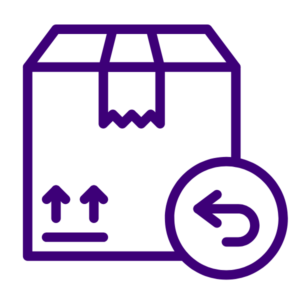CognitOps Insights
Warehouse KPIs: Best Practices, Advanced Strategies and Top Tools
Warehouse and distribution center operations have only become increasingly complex in the 21st century, requiring a deep understanding of warehouse KPIs, best practices, the most advanced optimization strategies and the tools to help you execute.
The Modern Warehouse Challenge
The proliferation of online e-commerce, the growth of overnight delivery expectations and the increasing competitive pressure on brick-and-mortar retail have driven expectations sky high for inventory and shipping operations.
Customers now expect shorter delivery times and flexible delivery options, placing pressure on warehouses to streamline processes and adopt advanced technologies to meet customer expectations. The growth of omnichannel retail has added complexity, as warehouses now need to fulfill orders from multiple channels, each with its own requirements and processes. Warehouses need greater flexibility and agility in their operations to handle varying order volumes and delivery expectations. And, with global supply chains becoming more interconnected, operations leaders need to manage larger inventories spread across multiple locations, which can lead to challenges such as inventory visibility, accuracy, and control.
All of this comes at the same time the industry is facing a skilled labor shortage, particularly in roles that require specialized knowledge such as operating advanced automation and robotics systems. Warehouses are grappling with high turnover rates, which can lead to disruptions and increased training costs. Furthermore, the rise of e-commerce has increased the demand for seasonal workers during peak periods, further straining resources.
The modern distribution network requires a deep understanding of the multitude of factors that influence performance. Experienced operations professionals know that tracking, evaluating, and optimizing Warehouse Key Performance Indicators (KPIs) is essential for improving operations.
1. Order Fulfillment Rate (OTIF)
Order fulfillment rate is a critical metric for warehouse operations as it directly impacts customer satisfaction and retention. This warehouse KPI measures the percentage of customer orders that are successfully delivered “on time and in full” (OTIF). Failure to meet this goal can result in dissatisfied customers, decreased loyalty, and negative word-of-mouth, impacting revenue and brand image. Conversely, achieving a high order fulfillment rate not only ensures customer satisfaction and retention but also positive word-of-mouth referrals, improved brand reputation, and increased customer loyalty.
Challenges:
- Inaccurate Inventory Records: Incorrect inventory records can lead to fulfillment errors, stock outs, and delays in order processing.
- Inefficient Picking Processes: Manual, mis-timed and inefficient picking processes can result in delays and errors in order fulfillment.
- Poor Inventory Visibility: Limited visibility into inventory levels and locations can lead to delays in order processing and fulfillment.
Advanced Strategies:
- Implement advanced inventory tracking technologies like RFID to improve accuracy.
- Utilize data analytics to forecast demand more accurately and adjust inventory levels accordingly.
- Utilize predictive labor analytics and planning to ensure labor is aligned with available work.
- Utilize cross-docking practices to reduce handling and storage time, improving order processing speed.
Tools:
- RFID Systems: Zebra RFID Solutions, Impinj RFID Solutions
- Inventory Management Software: Fishbowl Inventory, NetSuite Inventory Management
- Predictive Labor Analytics and Planning: CognitOps
- Cross-Docking Software: Descartes Systems Group, HighJump Warehouse Management
2. Inventory Turnover
Inventory turnover is a key indicator of how efficiently a warehouse manages its inventory and is crucial for improving cash flow and profitability. This KPI is calculated by dividing the cost of goods sold by the average inventory value. Failure to meet this goal can lead to excess inventory, higher carrying costs, and potential stockouts, impacting profitability and competitiveness. Achieving a high inventory turnover rate allows businesses to optimize inventory levels, reduce carrying costs, and free up capital that can be reinvested in the business or used to expand inventory selection, contributing to overall profitability and competitiveness.
Challenges:
- Inaccurate Demand Forecasting: Incorrect demand forecasts can lead to overstocking or stockouts, impacting inventory turnover.
- Poor Inventory Management: Inefficient inventory management practices can result in excess or obsolete inventory, reducing inventory turnover.
- Lack of Visibility: Limited visibility into inventory levels and demand patterns can lead to inefficient stocking decisions.
Advanced Strategies and Tools:
- Use machine learning algorithms to analyze historical data and predict future demand more accurately.
- Implement cross-docking practices to reduce holding time and improve inventory turnover rates.
- Utilize vendor-managed inventory (VMI) programs to streamline inventory replenishment and reduce excess stock.
Tools:
- Demand Forecasting Software: Blue Yonder (formerly JDA Software), Vanguard Software
- VMI Systems: Datalliance, E2open
- Inventory Optimization Software: EazyStock, Slimstock
3. Order Cycle Time
Order cycle time is one of the warehouse KPIs crucial for customer satisfaction and operational efficiency. It measures the total time for order processing, picking, packing, and shipping. Longer cycle times can lead to customer dissatisfaction, increased costs, and inefficient operations. Reducing order cycle time not only improves customer satisfaction but also enhances operational efficiency. Shorter cycle times enable businesses to process orders more quickly, improve resource utilization, and lower costs, ultimately leading to increased efficiency and competitiveness.
Challenges:
- Inefficient Order Processing: Manual or complex order processing workflows can lead to delays and errors. Lack of insight into ready-to-work can lead to bottlenecks.
- Suboptimal Transportation Routes: Inefficient transportation routes can increase lead times and delay order delivery.
- Lack of Communication: Poor communication between teams can lead to delays in order processing and shipment.
Advanced Strategies:
- Leverage labor management based on dynamic worker measurements to ensure maximum worker productivity across the warehouse.
- Implement real-time order tracking using GPS and WMS integration to identify bottlenecks and optimize workflows.
- Use route optimization software to plan the most efficient transportation routes.
- Utilize cross-functional teams to streamline communication and decision-making, reducing order processing delays.
Tools:
- Labor Productivity and Efficiency: CognitOps
- Real-Time Order Tracking Software: ShipStation, Shippo
- Route Optimization Software: Route4Me, OptimoRoute
4. Inventory Accuracy
Inventory accuracy is essential for maintaining optimal inventory levels and preventing stock outs or overstock situations. This warehouse KPI is measured as the percentage of inventory items that are correctly recorded in the warehouse management system compared to the actual physical inventory count. Inaccuracies can result in stock outs, overstock situations, order errors, and increased costs. Accurate inventory data on the other hand ensures that orders can be fulfilled on time and accurately, leading to higher customer satisfaction. It also helps improve forecasting accuracy and optimize inventory carrying costs.
Challenges:
- Manual Data Entry Errors: Manual data entry can lead to inaccuracies in inventory records, impacting inventory accuracy.
- Inefficient Quality Control Processes: Poor quality control processes can result in inaccurate inventory counts and records.
- Lack of Training: Insufficient training for warehouse staff can lead to errors in receiving, picking, and shipping processes, impacting inventory accuracy.
Advanced Strategies:
- Implement automated inventory counting technologies like drones or robots for more frequent and accurate counts.
- Utilize advanced analytics to identify root causes of inventory discrepancies and implement corrective actions.
- Implement a robust training program for warehouse staff to improve accuracy in receiving, picking, and shipping processes.
Tools:
- Automated Inventory Counting Technologies: Honeywell UAV Inventory Drone, Samsara AI Cameras
- Training Management Systems: SAP Litmos, Docebo
5. On-time Shipping Rate
The on-time shipping rate is critical for meeting customer expectations and maintaining a positive brand image. It measures the percentage of orders that are shipped on or before the promised ship date. Poor shipping performance can lead to customer dissatisfaction, lost sales, and damage to brand reputation. Meeting the on-time shipping rate not only satisfies customer expectations but also enhances brand reputation and customer loyalty. It can lead to increased customer satisfaction, positive reviews, and repeat business.
Challenges:
- Inefficient Order Processing: Manual, complex and unprioritized order processing can lead to delays and errors in shipping.
- Poor Communication with Carriers: Lack of communication with carriers can lead to delays in shipping and missed delivery windows.
- Unreliable Carriers: Dependence on unreliable carriers can lead to shipping delays and lower on-time shipping rates.
Advanced Strategies:
- Leverage order work visibility prioritized by customer SLA to meet order ship deadlines.
- Implement automated order processing systems to reduce manual errors and processing time.
- Use advanced shipping notifications and collaboration tools to improve communication with carriers.
- Establish strategic partnerships with reliable carriers to improve shipping reliability and reduce delays.
Tools:
- Prioritized Order Visibility: CognitOps
- Order Processing Automation Software: ShipStation, ShipWorks
- Carrier Performance Tracking Systems: Oracle Transportation Management, MercuryGate TMS
6. Warehouse Capacity Utilization
Optimizing warehouse space utilization can result in significant cost savings and operational improvements. This KPI measures the percentage of total warehouse space that is currently being used. Inefficient utilization can result in wasted space, increased costs, and storage inefficiencies. Efficient space utilization maximizes storage capacity, reduces storage costs, and improves inventory management, leading to more efficient operations and improved profitability.
Challenges:
- Inefficient Storage Layout: Poorly designed storage layouts can lead to wasted space and inefficient storage.
- Suboptimal Inventory Placement: Incorrect placement of inventory can lead to inefficient use of space and reduced storage capacity.
- Lack of Inventory Visibility: Limited visibility into inventory levels and locations can lead to overstocking or stockouts, impacting warehouse capacity utilization.
Advanced Strategies:
- Use 3D modeling and simulation tools to optimize storage layout and maximize space utilization.
- Implement dynamic slotting strategies to adapt to changing inventory profiles and demand patterns.
- Utilize vertical space effectively by implementing mezzanine floors or automated storage and retrieval systems (AS/RS).
Tools:
- 3D Modeling and Simulation Software: FlexSim, SIMUL8
- Slotting Optimization Software: Softeon Slotting, Optricity
- AS/RS Systems: Westfalia, Dematic
7. Return Rate
The return rate warehouse KPI indicates customer satisfaction and product quality. It measures the percentage of products that are returned by customers compared to the total number of products sold. High return rates can signal issues with products or processes, leading to decreased profitability and customer trust. Reducing the return rate not only improves customer satisfaction but also helps identify opportunities for product or process improvement. It can lead to cost savings associated with returns and improved customer trust.
Challenges:
- Poor Quality Control: Inadequate quality control processes can result in defective products being shipped, leading to higher return rates.
- Incorrect Order Fulfillment: Order fulfillment errors can lead to customers receiving the wrong products, increasing the likelihood of returns.
- Inaccurate Product Descriptions: Incorrect product descriptions can lead to customer dissatisfaction and returns.
Advanced Strategies:
- Implement quality management systems to ensure product quality meets standards.
- Analyze return data to identify trends and implement corrective actions to reduce return rates.
- Implement advanced quality control processes, such as automated inspection systems, to reduce the likelihood of defective products being shipped.
Tools:
- Quality Management Systems: MasterControl, ETQ Reliance
- Return Analytics Software: Oracle Retail, Logility
- Automated Inspection Systems: Cognex, Keyence
8. Labor Productivity and Efficiency
Labor productivity and efficiency are essential for maintaining optimal warehouse labor costs. This KPI measures the amount of work completed by an employee over a period compared to a standard. Low productivity can lead to increased labor costs and decreased operational performance. Improving employee productivity can lead to more efficient warehouse operations and improved customer service. Highly productive employees can help warehouses process orders more quickly, reduce errors, and improve overall operational efficiency.
Challenges:
- Inadequate Training: Insufficient training can lead to lower productivity levels and errors in warehouse operations.
- Poorly Defined Workflows: Unclear or inefficient workflows can lead to delays and errors in warehouse processes.
- Lack of Motivation: Low employee motivation can result in decreased productivity and morale, impacting warehouse performance.
Advanced Strategies:
- Implement continuous training programs to improve employee skills and knowledge.
- Use a labor management system to monitor worker activity against historical and dynamic standards. Measure three key labor metrics: productivity, utilization, and efficiency.
- Empower employees with decision-making authority to improve efficiency and motivation.
Tools:
- Training Management Systems: SAP Litmos, Docebo
- Labor Management Systems: Kronos Workforce Ready, CognitOps Align
9. Safety Performance
One of the most critical warehouse KPIs is safety performance. This is crucial for maintaining a safe working environment for warehouse employees. This KPI is measured using various metrics, including the number of accidents or injuries per year, the number of near misses reported, and the number of safety inspections conducted. Poor safety performance can result in accidents, injuries, fines, and reputational damage. Maintaining a high level of safety performance not only ensures a safe working environment for employees but also has financial benefits for the business. A safe workplace can reduce the risk of accidents and injuries, leading to higher employee morale and productivity, as well as compliance with regulations and avoidance of costly fines or penalties.
Challenges:
- Inadequate Safety Training: Lack of proper safety training can lead to higher accident rates and workplace injuries.
- Lack of Safety Equipment Maintenance: Poor maintenance of safety equipment can increase the risk of accidents and injuries.
- Unsafe Work Environment: Unsafe work environments, such as cluttered or poorly lit areas, can increase the risk of accidents and injuries.
Advanced Strategies:
- Implement behavior-based safety programs to promote a culture of safety among employees.
- Use predictive analytics to identify potential safety hazards and take preventive measures.
- Conduct regular safety audits and inspections to identify and address safety issues proactively.
Tools:
- Safety Training Software: SafetySkills, Vector Solutions
- Predictive Analytics Software: SAS Predictive Analytics, IBM Predictive Analytics
- Safety Inspection Apps: iAuditor, SafetyCulture
10. Cost per Order
The cost per order is a key metric for assessing the efficiency of warehouse operations. It measures the total cost of fulfilling customer orders divided by the total number of orders processed. High costs per order can indicate inefficiencies, leading to reduced profitability and competitiveness. Monitoring and reducing the cost per order can lead to improved profitability and competitiveness. By identifying areas for cost reduction and process improvement, warehouses can achieve long-term cost savings and improved financial performance.
Challenges:
- Inefficient Processes: Inefficient warehouse processes can lead to higher costs per order.
- High Labor Costs: Labor-intensive processes, low labor productivity and high amounts of overtime can contribute to higher costs per order.
- Lack of Visibility into Work: Limited visibility into what work will be ready when can leave warehouse managers with staff in the wrong locations.
- Overhead Expenses: High overhead expenses, such as rent, utilities, and maintenance, can increase the overall cost per order.
Advanced Strategies and Tools:
- Implement lean manufacturing principles to eliminate waste and optimize processes.
- Leverage warehouse visibility to maximize labor efficiency, avoid order pileups, and reduce late orders.
- Use activity-based costing to identify and reduce costs associated with specific activities.
- Implement robotic process automation (RPA) to automate repetitive tasks and reduce labor costs.
Tools:
- Lean Manufacturing Software: KaiNexus, 5S Today
- Warehouse Visibility Software: CognitOps
- Activity-Based Costing Software: ABC Analyzer, QuickBooks Advanced Reporting
- Robotic Process Automation (RPA): UiPath, Automation Anywhere
Warehouse KPIs are Critical to Distribution Network Performance
The above warehouse KPIs are imperative for evaluating and improving warehouse operations. For a single facility, warehouse KPIs such as order fulfillment rate, inventory turnover, and employee productivity provide valuable insights into performance. However, when managing multiple warehouses, additional warehouse KPIs come into play, such as overall order fulfillment rate, inventory turnover across warehouses, and network return rate.
Real-time visibility into progress against these warehouse KPIs is essential for meeting daily goals and ensuring operational efficiency from a single warehouse across the entire distribution network. Network measurement only works when the metrics at each warehouse are cohesive and consistent.
So, our last advanced strategy is that you utilize the same systems, data, and metrics at each location to ensure trustworthy reporting. Supply chain leaders and financial execs will thank you.


